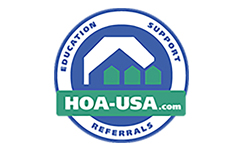A successful president has, or quickly develops, strong leadership and organization skills. He or she is elected by members to lead the community and help direct the board through tough situations.
The president’s main responsibilities include, but may not be limited to:
- Know the rules: The president should become familiar with the covenants, conditions, and restrictions (CC&Rs) and other governing documents of the association. Also, making sure the board has adequate insurance in case of being sued is crucial.
- Lead board meetings: First, the president should work with the secretary to create meeting agendas. This means making sure that vital issues don’t get left off the list. The president may ask for items a few weeks before the meeting to make sure all imperative items are addressed. During meetings, tough decisions might need to be made. The president should ensure that every board member gets to say his or her piece before a final decision.
- Lead membership meetings: The yearly member meeting may be overwhelming for any president because of the amount of people who wish to speak. No single member should be allowed too much time to speak.
- Oversee projects: It is crucial that the president knows what going on in the association. This may mean meeting with vendors and keeping in touch with the property manager.
In most associations, it is the president who has the power to sign documents on behalf of the board such as amendments and contracts. However, the president should make sure that he or she has board approval before committing the association to any decisions.
The president should not be hesitant about calling for volunteers. Most people don’t have extra time to volunteer, but that should not stop the president from asking individuals to help. Many homeowners would be willing to volunteer for a short-term or one-time-only project.

